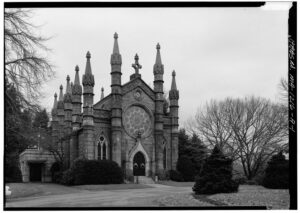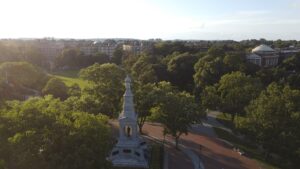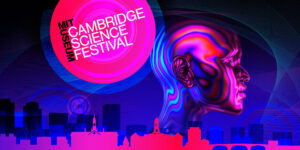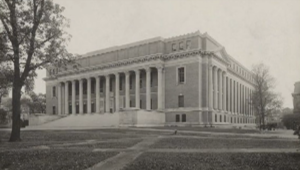Harvard University, a prestigious name in the realm of higher education, marks its inception back to the early 17th century. It was on September 8, 1636, that the first college in the American colonies was established, laying the foundation for what would become a leading global institution.
The Great and General Court of the Massachusetts Bay Colony played a pivotal role in its founding, diverging from the commonly held belief that John Harvard was its founder. Though not its founder, John Harvard’s legacy as the first major benefactor is significant. His contribution of half his estate and over 400 books was a monumental boost for the young institution.
The Growth and Expansion of Harvard
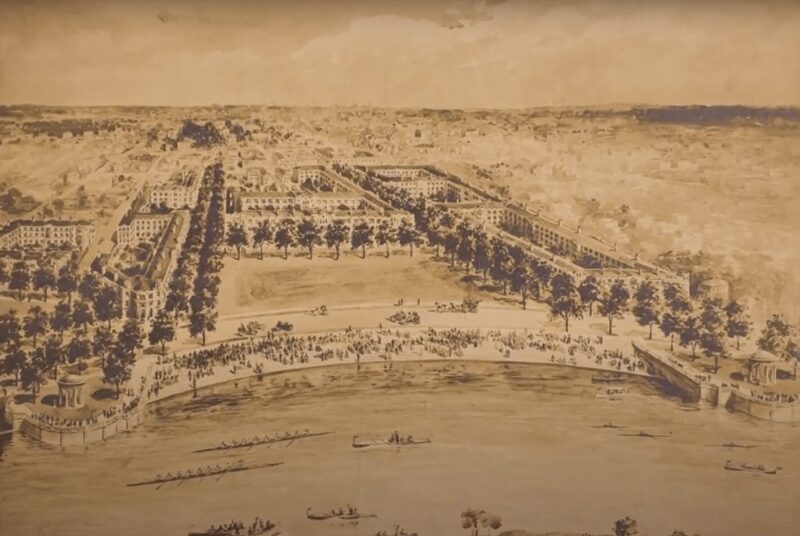
Initially, Harvard’s presence was primarily in Cambridge, Massachusetts, notably Harvard Yard. However, as time progressed, the University expanded its reach, establishing robust campuses in Boston’s Longwood and Allston neighborhoods. This expansion reflects Harvard’s evolving role in higher education and its commitment to reaching a broader community.
Harvard College vs. Harvard University
Often, there is a mix-up between Harvard College and Harvard University. To clarify, Harvard College is just one of the 14 schools under the Harvard University umbrella. Harvard College specifically caters to undergraduate students, while the other 13 schools are dedicated to graduate and professional education.
Early Years (17th Century)
The early years of Harvard University were marked by significant milestones that shaped its future trajectory. In 1639, just three years after its establishment, the college was officially named “Harvard College” in honor of John Harvard’s generous bequest. The appointment of Reverend Henry Dunster as the first president in 1640 was another key moment, signaling the beginning of a long line of distinguished leadership.
The First Graduates and Charter
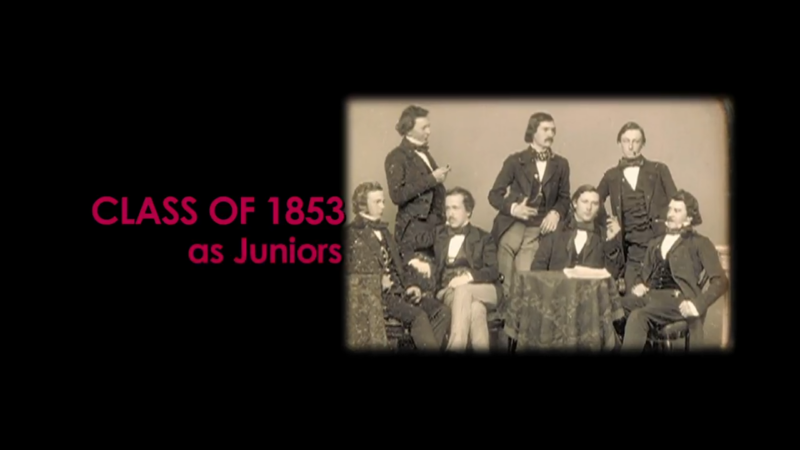
Harvard’s journey in education took a monumental step forward with its first commencement in 1642, celebrating the graduation of nine students. This event marked the start of Harvard’s long-standing tradition of academic excellence. In 1650, the college was granted a Charter, outlining its structure and solidifying its status in the educational landscape.
Inclusivity and Recognition
An interesting historical footnote is the enrollment of John Sassamon, the first known Native American student at Harvard, in 1653. This early instance of inclusivity is noteworthy in the college’s history. Additionally, the awarding of Harvard’s first Doctor of Divinity degree to Increase Mather in 1692 exemplifies the university’s growing academic stature.
Harvard University in the 18th Century
Harvard’s influence continued to grow in the 18th century. Notable alumni like John Adams, a future U.S. president, graduated in 1755, showcasing Harvard’s role in shaping influential leaders. The university’s commitment to educational expansion was further evidenced by the opening of Harvard Medical School in 1783.
Legal and Theological Education
The early 19th century saw the establishment of Harvard Law School and Divinity School in 1817 and 1816, respectively. These additions broadened Harvard’s academic spectrum, offering specialized education in crucial fields.
Architectural and Cultural Development
Cultural and infrastructural advancements also marked this period. The founding of the Harvard Observatory in 1839 and the appointment of Henry Wadsworth Longfellow as a professor in 1836 are examples of Harvard’s expanding influence in various domains. The first public demonstration of ether as a surgical anesthetic in 1846 at Harvard was a groundbreaking moment in medical history.
Harvard in the 19th and 20th Centuries

The latter half of the 19th century and the early 20th century were characterized by significant expansion and development at Harvard. The establishment of the Harvard Dental School in 1867, the opening of the Fogg Art Museum in 1896, and the founding of the Harvard Business School in 1908 are testaments to the university’s continuous growth.
Nobel Laureates and Historical Events
Harvard’s academic excellence was further highlighted when Theodore William Richards won the Nobel Prize in Chemistry in 1914, becoming the university’s first Nobel laureate. Additionally, the opening of Widener Library in 1915 marked a significant enhancement of Harvard’s academic resources.
Presidential Alumni and Technological Advancements
Harvard’s role in shaping future leaders continued, with John F. Kennedy graduating in 1940 and George W. Bush from Harvard Business School in 1975. The operation of the IBM Mark I computer at Harvard in 1944 was a landmark in the university’s technological advancements.
Recent Developments at Harvard University
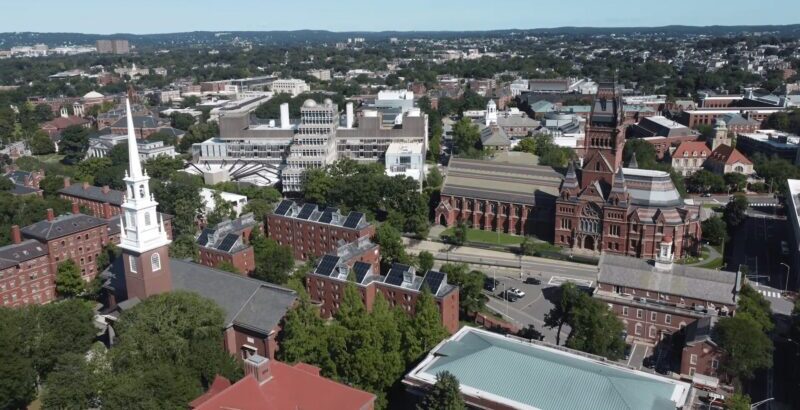
The turn of the 21st century saw significant developments, such as the merger of Radcliffe College with Harvard College in 1999 and the establishment of the School of Engineering and Applied Sciences in 2007. These moves reflected Harvard’s ongoing commitment to staying at the forefront of higher education.
Leadership and Honorary Degrees
Leadership changes, such as the appointment of Lawrence Summers as president in 2001, continued to shape the university’s direction. Notably, Helen Keller’s honorary degree in 1955 and Nelson Mandela’s in 1998 were significant recognitions of their extraordinary contributions to society.
Milestones and Celebrations
Harvard celebrated its 350th anniversary in 1986, a testament to its enduring legacy in higher education. The university’s rich history, marked by academic excellence, influential alumni, and continuous expansion, remains a beacon of learning and innovation in the global academic community.
Notable Figures That Went To Harvard
Harvard University has a long history of notable alumni across various fields. Here are some prominent figures who attended Harvard:
Politics and Government
- John Adams – 2nd President of the United States.
- John F. Kennedy – 35th President of the United States.
- Barack Obama – 44th President of the United States.
- Theodore Roosevelt – 26th President of the United States.
- Franklin D. Roosevelt – 32nd President of the United States.
- George W. Bush – 43rd President of the United States.
- Ban Ki-moon – 8th Secretary-General of the United Nations.
Literature and Arts
- T.S. Eliot – Poet and essayist, Nobel laureate in Literature.
- Ralph Waldo Emerson – Essayist, philosopher, and poet.
- Henry David Thoreau – Philosopher, naturalist, and writer.
Science and Technology
- Mark Zuckerberg – Co-founder of Facebook.
- Bill Gates – Co-founder of Microsoft (did not graduate).
Business
- Lloyd Blankfein – Former CEO of Goldman Sachs.
- Jamie Dimon – CEO of JPMorgan Chase.
Entertainment
- Natalie Portman – Actress and filmmaker.
- Matt Damon – Actor and screenwriter (did not graduate).
Law and Judiciary
- John Roberts – Chief Justice of the United States.
- Elena Kagan – Associate Justice of the Supreme Court of the United States.
Journalism and Media
- Conan O’Brien – Television host, comedian, and writer.
Public Health and Medicine
- Paul Farmer – Physician and anthropologist, known for his work in global health.
FAQs
Why is Harvard called Cambridge?
Harvard University is located in Cambridge, Massachusetts, named in honor of the English alma mater of some of the leading colonists of the town originally known as New Towne. The city of Cambridge maintained order on campus and provided economic support in Harvard’s early years. It’s important to note that Harvard University in America and Cambridge University in England are two distinct institutions in different cities named Cambridge.
How much of Cambridge is owned by Harvard?
Harvard University owns a significant portion of land in Cambridge. Based on data from Harvard’s building records, the university owns about 9.56% of the land in Cambridge, 5.70% in Allston, and 0.27% in Boston.
What is the oldest building at Harvard?
The oldest building still standing on Harvard’s campus is Massachusetts Hall, constructed in 1720. Over the years, it has served various purposes, including as an army barracks during the Revolutionary War.
Is Harvard older than Cambridge University?
No, Harvard is not older than Cambridge University. The University of Cambridge in England was established in 1209, more than four centuries before Harvard was founded. Cambridge is the second-oldest university in the English-speaking world, following the University of Oxford.
Who went to Harvard at 13?
William James Sidis is known for enrolling at Harvard University at the age of 11 in 1909, becoming the youngest person to do so. Although his father had previously tried to enroll him at age 9, the university had refused due to his age.
Can a 15-year-old get into Harvard?
There is no age requirement for applying to Harvard, though applicants are typically expected to have some secondary school experience. This implies that a 15-year-old could potentially apply and be admitted, provided they meet the other admission criteria.
When did Harvard allow girls?
Harvard began accepting female students in different capacities across various schools over time. The Harvard Graduate School of Education first admitted women in 1920, and Harvard Medical School accepted its first female enrollees in 1945. However, a woman had first applied to Harvard Medical School nearly 100 years earlier, in 1847. Women began petitioning for admittance to Harvard Law School as early as 1871.
Who went to Harvard at 9?
Fe del Mundo, a Filipino pediatrician, was the first woman admitted to Harvard University in 1936. However, she was not admitted at the age of 9. Instead, she was admitted later in her life and was recognized as a historic first in more ways than one throughout her career.
Conclusion
In conclusion, Harvard University’s journey from its humble beginnings in 1636 to its current status as a premier global educational institution is a tale of perseverance, innovation, and commitment to excellence. Its impact on education, research, and society at large continues to resonate, shaping the minds and futures of generations to come.





